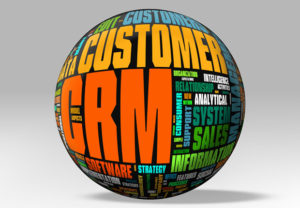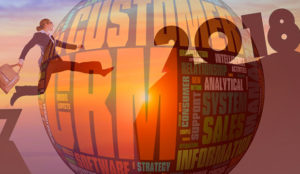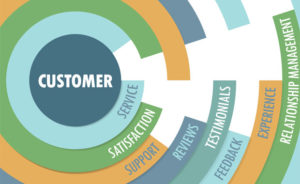In sales, A-B-C does not simply refer to the Alec Baldwin scene in Glengarry Glen Ross. It’s the system that sales managers (and salespeople themselves) use to categorize performance. A players smash their quotas on a regular basis; B players battle to deliver results, and usually do; C players have a history of missed objectives and should consider work in another field.
However, salespeople are not permanently ensconced in their spot on the A-B-C continuum. An A player who slacks off or fails to embrace sales technology can slide into B-player territory. A C player who works hard and learns can become a B player or even attain that desired A status. A lot of upward and downward mobility is possible.
The aim of every sales department is to be fully stocked with A players — not just at the time of hiring, but throughout their tenure with the company.
That’s not a realistic objective, however — A players are hard to recruit away from businesses where they’re prospering, dislodging them is expensive, and they can afford to be choosy. Unless you have an overwhelmingly attractive value proposition, building a staff of A players from the outside in is a tough task. (That’s why sales recruiters demand — and get — impressive compensation.)
For most companies, getting that A-team is a build, not buy, proposition. Salespeople are hired, and achieve at different levels; some excel immediately, but others struggle.
The question, then, becomes this: How do you elevate those struggling but promising salespeople to the next level?
Forrester analyst Tim Harmon, a colleague of mine at a previous job, was a strong advocate of investing the most in the B players. Improving their performance — elevating them to A-player status — paid off more than investments in the C players, who might never really get the hang of what they were doing, or in the A players, who were already exceeding expectations.
While Tim was speaking about channel partners in most cases, his observations hold true for individual salespeople as well.
Time and Experience
How do you give the B’s a boost? First off, buy them time. Much of a salesperson’s day is occupied with doing things that are not selling: 31 percent of the time is spent searching for or creating content, and 20 percent is devoted to reporting, administrative and CRM-related tasks, according to a 2015study by Docurated. Only a third of the day is actually spent selling.
Less time means they’re able to work fewer leads — or, more importantly, they’re unable to spend enough time with the leads that matter to close deals.
In this time-constrained environment, part of what makes an A player is the ability to evaluate the relative quality of qualified leads and manage their limited time to focus on the most likely to close. How do they have that ability? Some of it is talent, but much of it is learned through experience.
To get B players up to A level, they need that experience. To benefit their current companies, they need to gain that experience quickly. That’s where additional time becomes a big benefit.
So how do you give them additional time? A time machine would be useful, but there’s other technology out there that can do the job without warping the fabric of time-space.
Duplicated Effort
The Docurated study pointed out that 31 percent of salespeople’s time is spent searching for or creating content. That could be driven way down by the use of two associated sales technologies: sales enablement and configure, price, quote software.
Enablement, when it’s done right, provides a framework that classifies, sorts and evaluates content. It allows salespeople to access the right content for the customers they’re working with — and not just by topic but by the content’s effectiveness, based on feedback garnered from salespeople and from sales results. A good CPQ solution builds on enablement by delivering the right content at the time a quote is generated.
Sixty to 70 percent of all marketing content created goes unused, according to aSirius Decisions study. That is not because the content is all bad — it’s because it’s difficult for salespeople to find it unless a good enablement solution is in place.
That leads salespeople to create their own content, often duplicating the efforts of the marketing department. It is wasteful and costs sales time — time that B players could be using to get better.
The other time sink for sales is administrative tasks. There’s no getting around the fact that our various sales management systems need data to function, meaning that data entry falls to the salesperson. Having multiple, disconnected systems multiplies the effort salespeople need to expend to feed the system. It also increases the likelihood of errors or omissions, causing problems that may need to be untangled later.
Bring in the CIO
The answer here is integration — if not the use of a single platform, the use of a set of systems that are connected and can share data rapidly. The salesperson still has to enter data, but then it’s shared across several systems, cutting down on data entry and ensuring there’s a single version of the data in the company’s records.
That is where the CIO can play a role directly connected to revenue. By being included in the process of building a sales software ecosystem within a company, the CIO can ensure a degree of unity across all systems that improves productivity and buys back some time for selling.
Again, the more time the B players have, the faster they can turn into A players.
The side benefit of employing these technologies to help improve the B players is that it will buy additional selling time for the A players, too — and when driven salespeople have more time, their performance improves accordingly.

























































